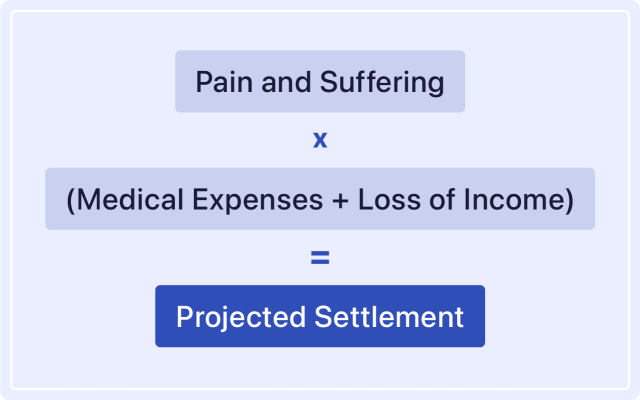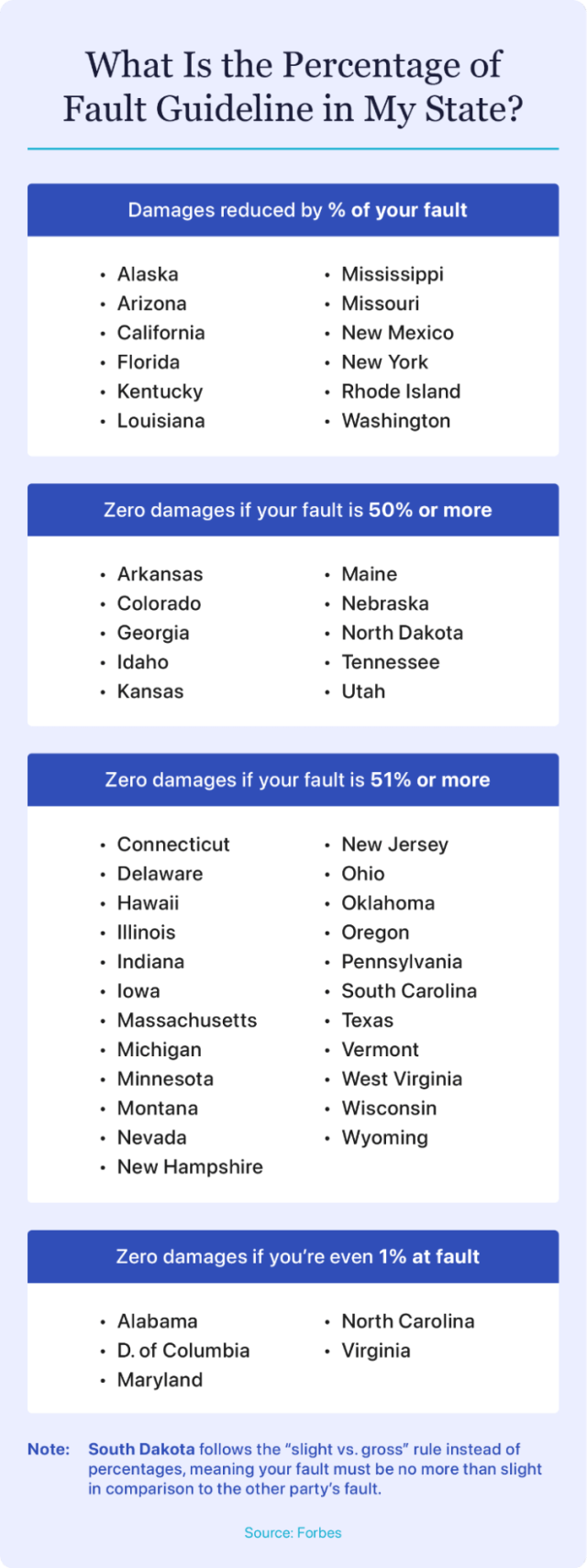Settlement Calculator: Determining What Impacts My Claim Worth
A settlement calculator offers potential estimated amounts a defendant might offer to settle a personal injury or wrongful death lawsuit. If you’ve been injured, you may be eligible to file a legal claim to recover medical costs and lost wages.

Calculate Your Settlement
A settlement calculator may suggest potential settlement values of individual personal injury cases. The types of cases this applies to could include:
- Accidents
- Dangerous consumer products
- Slips, trips and falls
- Wrongful death
Using some basic information about the financial impact of your legal complaint, the settlement calculator offers a rough estimate of how much your claim could be worth.
Pain and Suffering Settlement Calculator
The results calculated are meant for instructional purposes only. They do not constitute legal advice and offer a simplified overview of the potential estimated value of your case. Consult an experienced attorney for a full analysis of your specific case.
How Is Pain and Suffering Calculated?
The noneconomic losses experienced following a personal injury, known as pain and suffering, can be calculated by multiplying your financial losses by a value between 1.5 and five. The pain and suffering multiplier amount increases based on the seriousness of the damages caused.

An insurance adjuster or plaintiff’s attorney typically identifies the appropriate multiplier based on each individual case. To determine a potential settlement value, they first combine the total of medical expenses to date, projected future medical expenses, lost wages to date and projected future lost income.
The resulting sum is then multiplied by the pain and suffering multiplier value to produce a projected settlement amount. This methodology is based on a commonly used formula as outlined by the Sacramento County Public Law Library.
Factors To Remember
When determining the medical expenses values to plug into the calculator, keep in mind that the information requested should account for more than just the total amount of your hospital bills. It may also include:
- Ambulance
- Lab and X-ray services
- Physical therapy
- Prescription medications
- Nursing care
As you add up your lost income total, you may need to incorporate the dollar value of a potential job opportunity that didn’t come to fruition as a result of your pain and suffering or medical care. Freelance work or a job interview are examples.
Consider Your State’s Legal Guidelines
Lawyers must follow their state’s established laws when considering a case. This is especially important when looking at the different statutes of limitations for filing a claim and the impact of negligence on a potential settlement.
Statute of Limitations
Almost half of the country’s 50 states have a 2-year time limit — also known as a statute of limitations — for submitting a legal claim for either a personal injury or wrongful death. Identifying when the clock starts on a statute of limitations can be difficult.
In some cases, the statute of limitations begins immediately when the injury occurs, while in other cases the timeline may be based on when your initial awareness of the injury occurs. A serious medical diagnosis is one example of an instance in which your awareness of an injury may begin months or years after the initial incident.

Statutes of limitations range from 1-6 years, depending on the state in which you reside. The majority of states use a 2- or 3-year statute for both personal injury and wrongful death cases. Only Maine and North Dakota offer a 6-year statute, although North Dakota uses that lengthy statute for personal injury claims and offers two years for wrongful death cases.
Percentage of Fault
Those accused of causing harm to another person that can be categorized as a personal injury have the option to claim comparative negligence. This allows the victim to recoup only a portion of the damages they are due based on a percentage of fault as determined. State rules typically fall into one of four categories:
- Damages are reduced by the percentage you are found to be at fault.
- Zero damages will be paid out if you are found to be 50% or more responsible.
- Zero damages will be paid out if you are found to be 51% or more responsible.
- Zero damages will be paid out if you are found to be 1% or more responsible.
Check the chart below to find out the legal rules relevant to your state.

It’s interesting to note that South Dakota is the only U.S. state that does not use the percentage of fault systems. Instead, it uses an older method called the “slight vs. gross” rule. Under this process, the plaintiff’s negligence must be identified as being only a slight factor in contrast to the defendant’s gross negligence in order for the plaintiff to receive financial payback.
Consult a Lawyer About Your Unique Case
Consult with an attorney to discuss the details of your case, determine your eligibility since not all cases will actually have validity and receive a much more thorough settlement estimate. No two cases are the same, so it’s important to remember that no settlement calculator can provide you with an exact projected settlement.
If you or someone you know is interested in filing a claim for a personal injury or wrongful death case, the settlement calculator above can serve as a starting point to better understand your case’s possible dollar value and your legal rights.
5 Cited Research Articles
Consumernotice.org adheres to the highest ethical standards for content production and references only credible sources of information, including government reports, interviews with experts, highly regarded nonprofit organizations, peer-reviewed journals, court records and academic organizations. You can learn more about our dedication to relevance, accuracy and transparency by reading our editorial policy.
- Bieber, C. (2023, March 8). What Is Comparative Negligence? Retrieved from https://www.forbes.com/advisor/legal/personal-injury/comparative-negligence/
- Sacramento County Public Law Library. (2022, May). Calculating Personal Injury Damages. Retrieved from https://saclaw.org/articles/calculating-personal-injury-damages/
- Cornell Law School. (2020, July). Pain and suffering. Retrieved from https://www.law.cornell.edu/wex/pain_and_suffering
- Cornell Law School. (2020, July). Personal injury. Retrieved from https://www.law.cornell.edu/wex/personal_injury
- Cornell Law School. (n.d.). Statute of limitations. Retrieved from https://www.law.cornell.edu/wex/statute_of_limitations
Calling this number connects you with a Consumer Notice, LLC representative. We will direct you to one of our trusted legal partners for a free case review.
Consumer Notice, LLC's trusted legal partners support the organization's mission to keep people safe from dangerous drugs and medical devices. For more information, visit our partners page.
844-420-1914